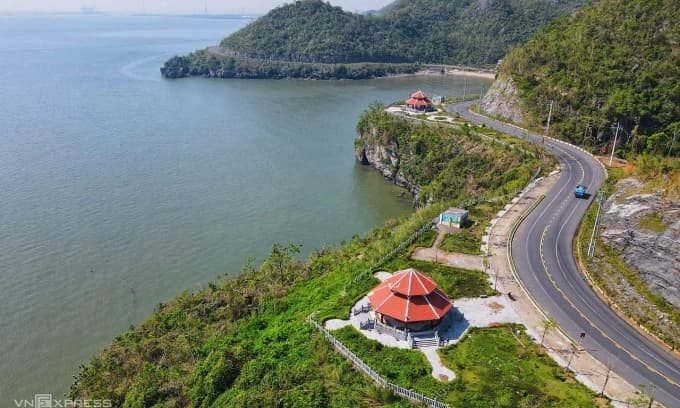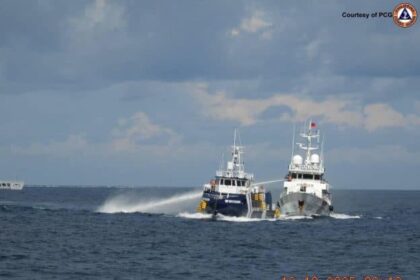Recognition puts a spotlight on Vietnam’s rugged island playground
Vietnam’s Cat Ba has secured a place among Southeast Asia’s standout islands, with editors naming it one of the region’s top eight and the choice for adventure. The recognition highlights how Cat Ba blends dramatic scenery, outdoor pursuits, and a calmer pace than many better known beach destinations. It is Vietnam’s only representative on the list, a point of pride for the northern port city of Hai Phong that administers the archipelago.
- Recognition puts a spotlight on Vietnam’s rugged island playground
- Where is Cat Ba and what makes its landscape unique
- Adventure central: climbing, hiking, and bioluminescent waters
- Wildlife and conservation in Cat Ba National Park
- Lan Ha Bay as a calmer gateway to the karst seascape
- Tourism momentum and when to go
- How Cat Ba compares with the region’s other standout islands
- Planning basics for first time visitors
- What to Know
Cat Ba sits beside the famous seascape of Ha Long Bay. From the island’s harbors, hundreds of limestone towers rise from clear water in a maze of green slopes and hidden lagoons. The wider Cat Ba Archipelago includes 367 islands, with Cat Ba itself the largest. Cruise boats thread between karst cliffs, kayakers slip into sheltered coves, and rock climbers test themselves on sun warmed walls at sites like Butterfly Valley.
Editors spotlighted the island’s adventurous side for good reason. Climbers flock to its limestone cliffs. Hikers gain sweeping views from the Ngu Lam summit. Kayakers, especially on calm nights, can watch the sea sparkle with bioluminescent plankton. Interest has surged in 2025, with international searches for Cat Ba rising on major travel platforms and visitors sharing positive reviews about its peaceful vibe, the beauty of Lan Ha Bay, and the biodiversity protected in Cat Ba National Park.
Where is Cat Ba and what makes its landscape unique
Cat Ba lies in the Gulf of Tonkin off northern Vietnam, administered by Hai Phong City and adjacent to Ha Long Bay. Its scenery is shaped by limestone karst, a landscape formed when slightly acidic water dissolves rock over long periods. The result is a labyrinth of sheer pillars, caves, and enclosed lagoons that are both fragile and visually striking. Dense green vegetation clings to the cliffs and the water below shifts between jade and turquoise depending on light and tide.
The island is part of a UNESCO biosphere reserve, reflecting the interplay between people and nature across forests, wetlands, coral reefs, and marine channels. That protected status helps limit the heaviest impacts of mass tourism and encourages a mix of conservation, research, and low impact travel.
Adventure central: climbing, hiking, and bioluminescent waters
Cat Ba has become a favorite for travelers who want more than a beach towel and a sunset cocktail. Its limestone offers hundreds of routes for climbers, its hills provide day hikes with coastline views, and its bays are ideal for paddling. Guides, gear shops, and outfitters make it easier to try a new activity, from top roping to night kayaking.
Climbing the karst walls
Butterfly Valley is the island’s best known climbing area, with routes of varied difficulty set among caves and overhangs that stay cool and shaded for much of the day. The limestone has pockets, tufas, and sharp edges, so good footwear and care are essential. Another pursuit, deep water soloing, is bouldering above the sea without ropes. Climbers move along low to mid height routes on sea cliffs and, if they fall, splash into the water below. It is exhilarating, but conditions matter. Safe tide levels, calm seas, and a support boat are non negotiable for those trying it with a licensed operator.
Hiking to panoramic viewpoints
Hiking trails fan out within Cat Ba National Park, with forest shade, viewpoints, and a chance to glimpse wildlife. The trail to Ngu Lam Peak is a favorite, rewarding patient hikers with sweeping views of ridgelines and limestone domes dotting the horizon. Trails can be steep and humid, so start early, carry water, and wear shoes with solid grip. Park officials often post notices about closures or maintenance on main trailheads; those signs are worth checking before setting off.
Kayaking and the night glow
Kayaking brings you close to the karst world. Daytime routes thread into grottoes, under low arches, and past small beaches. After dark, calm conditions sometimes reveal glowing eddies from bioluminescent plankton. These are tiny organisms, often dinoflagellates, that emit a cold light when stirred by movement. Paddles, fish, and boat wakes can trigger a brief shimmer that feels magical in quiet coves. The intensity varies by season, temperature, and location, so local guides can advise on the best nights to look for it.
Wildlife and conservation in Cat Ba National Park
Nearly half of Cat Ba is protected as a national park, a patchwork of evergreen forest, coastal mangroves, freshwater wetlands, and marine habitats. The island is home to coral communities, rare orchids, and an array of birds, reptiles, and butterflies. Conservationists also work to protect the Cat Ba langur, among the world’s rarest primates. These langurs are critically endangered, and their survival depends on habitat protection, anti poaching patrols, and careful visitor behavior around sensitive zones.
Visitors can support conservation by staying on marked trails, booking tours with operators who follow park rules, avoiding feeding wildlife, and using reef safe sunscreen for any time in the water. Single use plastics are a problem in coastal zones worldwide, so carrying a refillable bottle and packing out all waste helps keep the archipelago cleaner for the next visitor and for the communities that depend on fishing and tourism.
Lan Ha Bay as a calmer gateway to the karst seascape
Many travelers know Ha Long Bay by name, yet Lan Ha Bay, which wraps the southeast of Cat Ba, offers similar scenery with fewer large boats. From Cat Ba Town, day boats and overnight cruises follow routes through quiet channels where sheer limestone walls drop into green water. Itineraries often include kayaking, small beach stops, and visits to floating villages tucked into sheltered coves. For visitors who want the grandeur of the karst landscape without the busiest anchorages, Lan Ha Bay is the preferred base.
Tourism momentum and when to go
Search data on major booking platforms show Cat Ba rising in traveler interest in 2025, reinforced by strong reviews that praise its mix of activity and calm. The island has a growing range of lodging, from simple guesthouses in Cat Ba Town to upscale resorts tucked away on quieter bays.
Weather matters for planning. The most settled months tend to run from late autumn to spring, with cooler air and clearer skies. Early summer can be hot, and tropical storms are more likely from late summer into early autumn. Adventure travelers should monitor forecasts, build flexibility into itineraries, and keep a day or two as a buffer in case of ferry suspensions or rough seas.
How Cat Ba compares with the region’s other standout islands
The Southeast Asia list draws attention to how diverse the region’s islands are. Koh Chang in Thailand appeals to beach fans, from lively White Sand Beach to quieter stretches like Klong Prao, with waterfalls and mangroves inland. Penang in Malaysia stands out for food in George Town, where Chinese and Indian culinary traditions shaped street markets and fine dining. Indonesia’s Komodo is about wildlife, with managed visits to see Komodo dragons in a national park that also hosts crab eating macaques and Timor pythons. Visitor numbers are controlled and local guides are required to protect sensitive areas.
In the Philippines, Panay is the stop for festivals, including Kalibo’s Ati Atihan and Iloilo’s Dinagyang, both rich in dance and pageantry. Isla Verde is a diver’s dream, with waters hosting around 1,700 fish species and about 300 coral species, with boats often departing from Puerto Galera. Java in Indonesia offers temple visits at a scale unlike anywhere else in the region, from Borobudur to the Prambanan complex. Laos enters the list with Don Khong, the largest island in the Mekong’s Si Phan Don, where cycling quiet roads is the draw. In that company, Cat Ba represents the adventure choice, with a toolkit of climbs, hikes, and paddles set among sea cliffs and green hills.
Planning basics for first time visitors
Getting there
From Hanoi, travelers reach Hai Phong by highway bus or train, then continue by speedboat to Cat Ba Town. Boats from Hai Phong’s central piers typically take under one hour, though schedules change by season. Another route connects Ha Long’s Tuan Chau wharf to Gia Luan pier on Cat Ba by ferry. During busy periods, booking transport a day or two ahead reduces the chance of delays.
Getting around
In Cat Ba Town, short hops are easy by taxi or electric buggy, and day trips to Lan Ha Bay are sold by many small operators along the waterfront. Motorbike rental is common for exploring interior roads, but traffic, steep grades, and sudden rain are real factors. Ride well within your limits and wear a helmet. For sea trips, choose boats that carry life jackets and follow local safety guidance.
Where to stay
Budget minded travelers find guesthouses and small hotels in and around Cat Ba Town, while those seeking privacy choose resorts near quieter bays or on adjacent islets. Many visitors pair one night in town with one or two nights on a Lan Ha Bay cruise for a contrast between local life and the stillness of the open water.
Staying safe and responsible
Check weather forecasts before committing to climbing or sea trips, and consider travel insurance that covers adventure sports. For climbing or deep water soloing, go with experienced, licensed guides who understand tides and safe exits. Use reef safe sunscreen, carry a reusable water bottle, and avoid stepping on coral or collecting shells. Respect floating communities by asking before taking photos and keeping engine noise down near homes and fish pens.
What to Know
- Cat Ba was named among Southeast Asia’s top islands and recognized as the choice for adventure.
- The archipelago has 367 islands, with Cat Ba the largest and adjacent to Ha Long Bay.
- Signature activities include climbing at Butterfly Valley, hiking to Ngu Lam Peak, and kayaking among bioluminescent plankton on calm nights.
- Cat Ba National Park protects forests, wetlands, and rare species such as the critically endangered Cat Ba langur.
- Lan Ha Bay offers a quieter version of the karst scenery with day boats and overnight cruises from Cat Ba Town.
- Traveler interest climbed in 2025, with positive reviews highlighting peaceful scenery and biodiversity.
- Best conditions usually fall between late autumn and spring, while late summer can bring storms and rough seas.
- Access is easiest via Hai Phong by speedboat, or by ferry from Ha Long’s Tuan Chau to Cat Ba’s Gia Luan.
- Across the list, each island shines for a theme, from beaches on Koh Chang to food in Penang and temples on Java, with Cat Ba standing out for active exploration.












